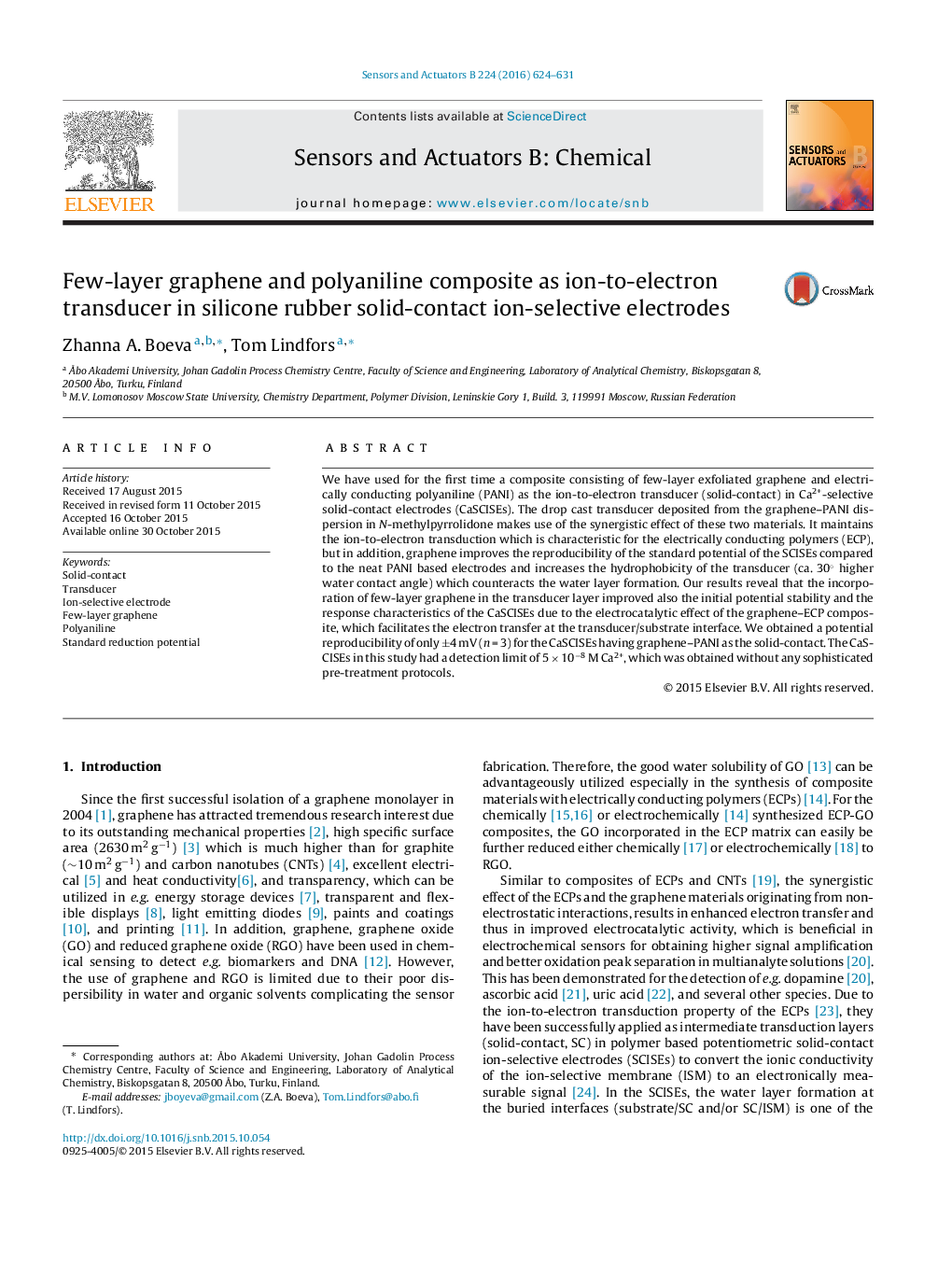| Article ID | Journal | Published Year | Pages | File Type |
|---|---|---|---|---|
| 750531 | Sensors and Actuators B: Chemical | 2016 | 8 Pages |
•The new composite transducer makes use of the synergistic effect of few-layer graphene and polyaniline.•This results in improved reproducibility of the standard potential and initial potential stability of SCISEs.•Incorporation of graphene in the solid-contact increases the hydrophobicity and counteracts the water later formation.
We have used for the first time a composite consisting of few-layer exfoliated graphene and electrically conducting polyaniline (PANI) as the ion-to-electron transducer (solid-contact) in Ca2+-selective solid-contact electrodes (CaSCISEs). The drop cast transducer deposited from the graphene–PANI dispersion in N-methylpyrrolidone makes use of the synergistic effect of these two materials. It maintains the ion-to-electron transduction which is characteristic for the electrically conducting polymers (ECP), but in addition, graphene improves the reproducibility of the standard potential of the SCISEs compared to the neat PANI based electrodes and increases the hydrophobicity of the transducer (ca. 30° higher water contact angle) which counteracts the water layer formation. Our results reveal that the incorporation of few-layer graphene in the transducer layer improved also the initial potential stability and the response characteristics of the CaSCISEs due to the electrocatalytic effect of the graphene–ECP composite, which facilitates the electron transfer at the transducer/substrate interface. We obtained a potential reproducibility of only ±4 mV (n = 3) for the CaSCISEs having graphene–PANI as the solid-contact. The CaSCISEs in this study had a detection limit of 5 × 10−8 M Ca2+, which was obtained without any sophisticated pre-treatment protocols.
Graphical abstractFigure optionsDownload full-size imageDownload as PowerPoint slide
